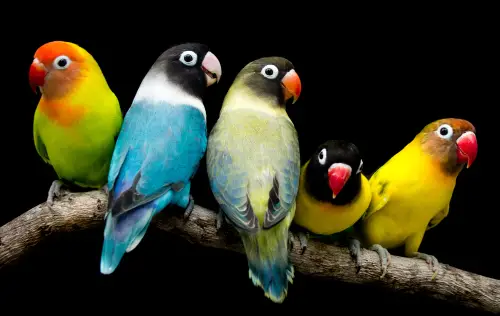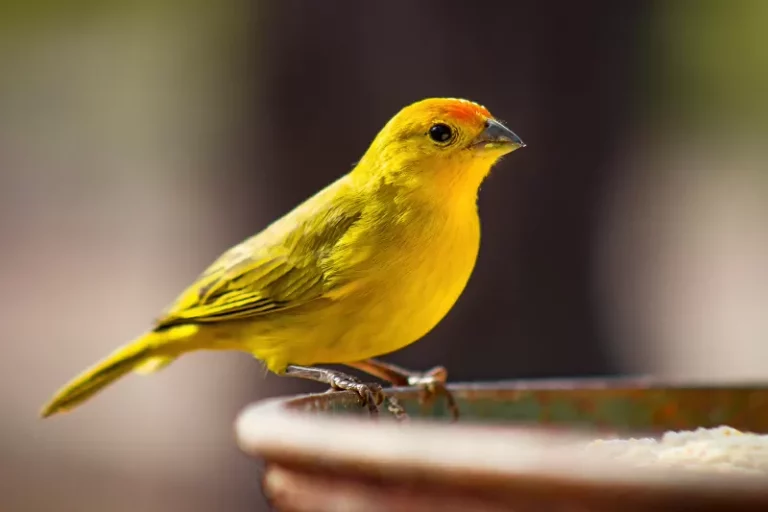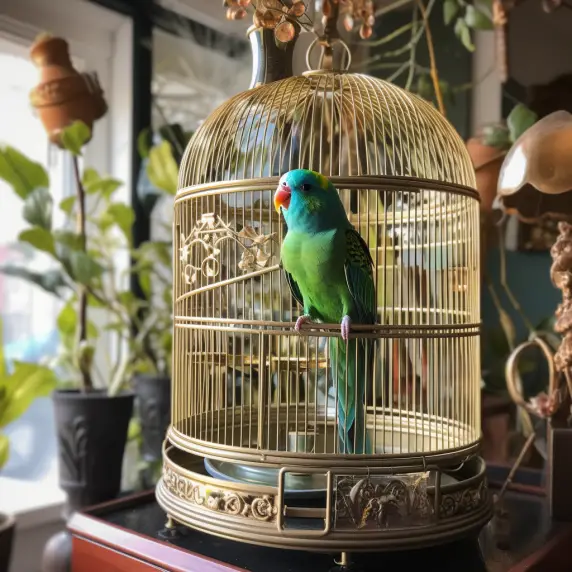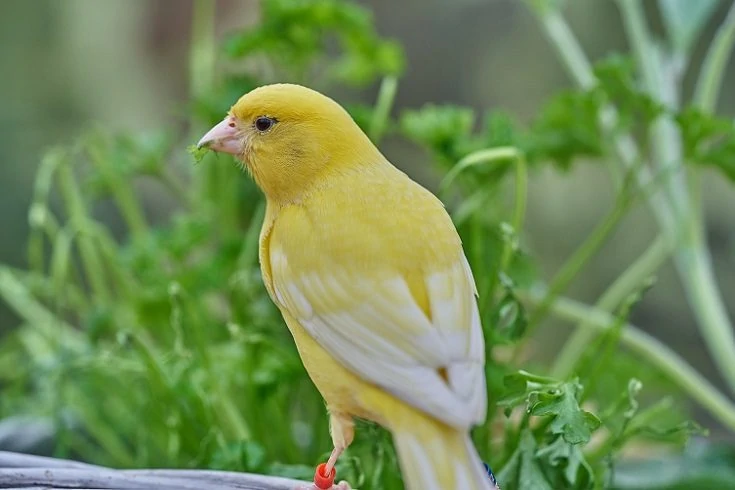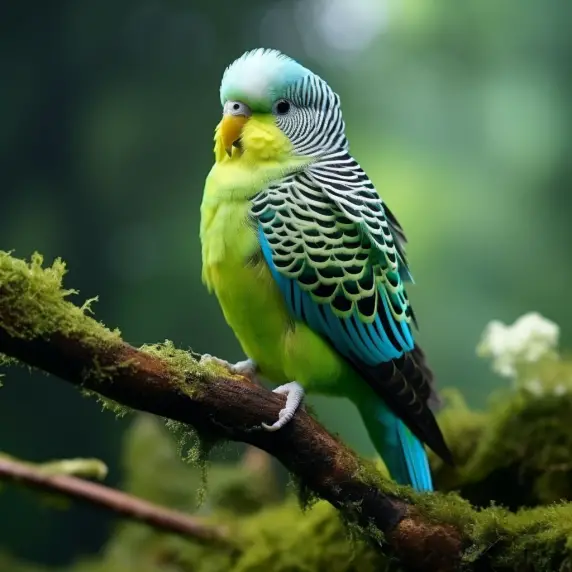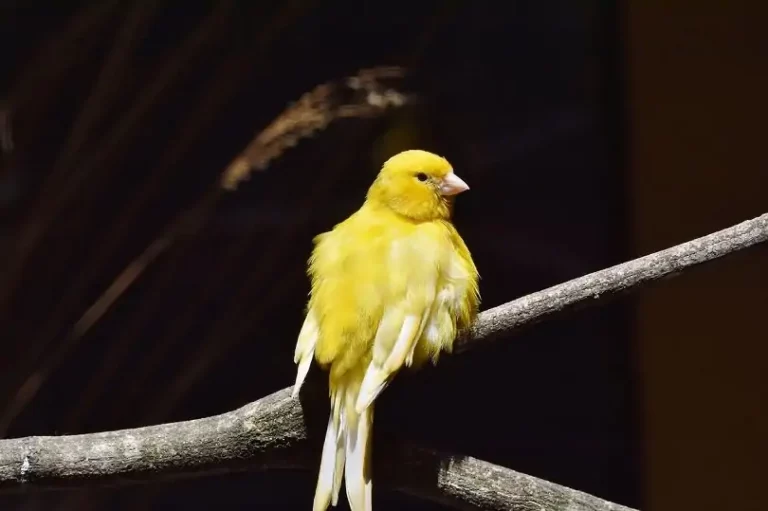The Comprehensive Guide to Clicker Training Your Pet Bird
In this guide, we’ll delve into clicker training, a proven method for teaching birds behaviors and tricks, based on operant conditioning principles.
This straightforward technique uses a clicking device to highlight correct behavior, fostering better communication and a stronger bond with your bird while addressing behavioral concerns and promoting fun tricks.
Clicker training, beneficial to a variety of bird species, is accessible to bird owners regardless of experience level.
Key takeaways
Clicker training is a proven method to teach birds behaviors and tricks.
It uses a clicking device to highlight correct behavior, promoting better communication.
This training strengthens your bond with the bird and addresses behavioral issues.
Clicker training is beneficial for a variety of bird species.
It’s accessible to bird owners regardless of experience level.
Getting Started: Choosing a Clicker and Treats
Before embarking on your clicker training journey, it’s important to choose the right clicker and treats for your bird. There are several types of clickers available, including traditional box clickers, button clickers, and quieter clickers for birds who are sensitive to loud noises.
You can even use alternative clicking sounds, such as pen clicking or small bells, if you find that your bird responds better to these sounds.
When selecting a clicker, consider your bird’s sensitivity to sound and choose a clicker that will not startle or stress your feathered friend. Additionally, the clicker should be easy for you to use and comfortable to hold during training sessions.
Don’t hesitate to try out different clickers to find the best fit for both you and your bird.
In addition to choosing the right clicker, selecting appropriate treats and rewards is essential for successful clicker training. Begin by identifying your bird’s favorite foods and selecting small, bite-sized treats that can be easily consumed during training sessions.
Be mindful of your bird’s nutritional needs, striking a balance between taste and health. Keep in mind that not all rewards need to be food-based; some birds may respond well to praise, petting, or playtime as a reward for exhibiting desired behaviors.
By carefully choosing the right clicker and treats, you will create a solid foundation for effective clicker training and set the stage for a positive, rewarding experience for both you and your bird.
Clicker Training Basics: Building Trust and Communication
Establishing a strong bond with your bird
Before diving into clicker training, it’s crucial to establish a strong bond with your bird. Building trust and rapport with your feathered friend will make the training process more enjoyable and effective for both of you. Spend time with your bird, interact positively, and be patient as you work on strengthening your relationship.
A trusting bond will pave the way for successful clicker training.
Understanding your bird’s body language
In order to communicate effectively with your bird during clicker training, it’s important to understand your bird’s body language. Pay close attention to their signals, such as posture, eye pinning, or feather movement, as these can provide valuable insights into your bird’s emotions and needs.
Recognizing and responding to your bird’s body language will enhance communication and enable you to better adjust your training approach as needed.
Introducing the clicker and treats to your bird
Once you’ve established trust and learned to read your bird’s body language, it’s time to introduce the clicker and treats. Begin by clicking the clicker and immediately offering your bird a treat, repeating this process several times.
This will help your bird associate the clicking sound with a positive reward, laying the groundwork for future clicker training.
Associating the click with a reward
As your bird becomes more familiar with the clicker, continue to reinforce the association between the click and a reward. During training sessions, use the clicker to mark the exact moment when your bird performs a desired behavior, immediately following up with a treat.
With consistent practice, your bird will learn that the click signifies a job well done and serves as a marker for a forthcoming reward.
Clicker Training Techniques and Tips
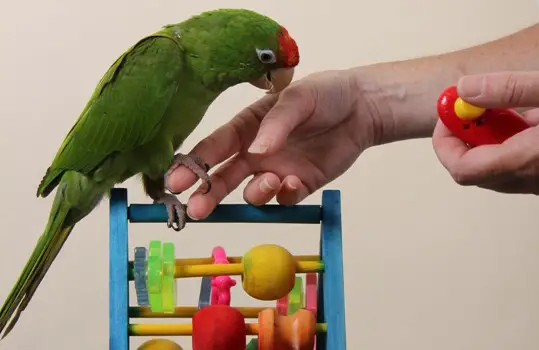
Positive reinforcement vs. negative reinforcement
An essential principle of clicker training is the use of positive reinforcement to encourage desired behaviors. Unlike negative reinforcement, which relies on removing an aversive stimulus to promote behavior, positive reinforcement involves rewarding your bird when they exhibit a desired behavior.
This approach is not only more effective but also fosters a positive and trusting relationship between you and your bird.
Training sessions: duration, frequency, and location
To ensure successful clicker training, be mindful of the duration, frequency, and location of your training sessions. Keep sessions short, ideally around 5-10 minutes, to maintain your bird’s focus and interest. Conduct training sessions frequently, aiming for at least one session per day, or more if your bird is eager to learn.
Choose a quiet, comfortable, and familiar environment for training, free of distractions that could hinder your bird’s focus.
Breaking down complex behaviors into smaller steps
When teaching your bird a new behavior or trick, it’s important to break down complex actions into smaller, more manageable steps. This technique, known as “shaping,” allows your bird to progressively learn each component of the behavior before combining them into a complete action.
Using the clicker to mark and reward each step will help your bird better understand and master the desired behavior.
Clicking at the right moment
Timing is crucial in clicker training. Ensure you click the clicker at the exact moment your bird performs the desired behavior, immediately followed by a reward. Precise timing helps your bird understand which action is being rewarded, allowing them to learn more quickly and effectively.
Be patient and practice consistency to help your bird grasp the connection between their actions, the click, and the reward.
Fading out the clicker and treats over time
As your bird becomes more proficient in performing the desired behavior, you can gradually fade out the clicker and treats. Start by clicking and rewarding intermittently, eventually phasing out the clicker entirely.
Your bird will continue to perform the behavior without the need for constant reinforcement, allowing you to maintain their training without reliance on the clicker or treats.
Teaching Your Bird New Behaviors and Tricks
Target training: teaching your bird to touch a target
Target training is an excellent starting point for teaching your bird new behaviors and tricks. Begin by selecting a target, such as a chopstick or a small stick, and present it to your bird. When your bird touches the target with their beak, immediately click and reward.
Repeat this process until your bird consistently touches the target when presented. Target training not only provides a foundation for teaching more complex tricks but also helps your bird understand the concept of clicker training.
Step up: training your bird to step onto your hand
Teaching your bird to step onto your hand, also known as “step up,” is a valuable behavior that fosters trust and facilitates handling. To begin, present your hand near your bird’s feet, using a verbal cue like “step up” to encourage them to place their foot on your hand.
As soon as your bird steps up, click and reward. Practice this behavior consistently, gradually introducing your other hand for your bird to step onto, effectively transferring between hands.
Recall training: teaching your bird to come to you
Recall training, or teaching your bird to come to you when called, is an essential skill that can improve safety and facilitate handling. Start by calling your bird’s name and offering a treat when they approach you. Click and reward as soon as they reach you.
Gradually increase the distance between you and your bird during training sessions, always rewarding them for coming when called. Consistent practice will help your bird develop a reliable recall response.
Advanced tricks: shaking hands, playing fetch, and more
Once your bird has mastered the basics of clicker training, you can begin teaching more advanced tricks, such as shaking hands, playing fetch, or even dancing. Use the foundation skills your bird has acquired through target training, step up, and recall training to gradually shape and reinforce these new behaviors.
Remember to be patient and consistent in your training, always rewarding your bird for their efforts and celebrating their progress.
Overcoming Challenges in Clicker Training
Addressing fear or aggression
If your bird exhibits fear or aggression during clicker training sessions, it’s essential to address these emotions to ensure a positive training experience. For fearful birds, use gentle, gradual desensitization techniques to help them become more comfortable with the training process.
In cases of aggression, try to identify and eliminate any triggers or stressors that may be causing the aggressive behavior. Always proceed with patience and understanding, respecting your bird’s boundaries and providing ample time for them to adjust to the training process.
Dealing with regression in training
At times, your bird may experience regression, appearing to forget previously learned behaviors or responding poorly to training. Regression is a normal part of the learning process, and it’s crucial to remain patient and consistent during these periods.
Revisit the basics of clicker training, reinforcing the association between the click and a reward, and gradually rebuild your bird’s skills. Offer plenty of encouragement and positive reinforcement to help your bird regain confidence in their abilities.
Troubleshooting common problems
When encountering challenges during clicker training, it’s important to troubleshoot and address the underlying issues. For example, if your bird is unresponsive to the clicker, consider trying a different type of clicker or adjusting the volume.
If your bird is not motivated by the treats you’re offering, experiment with different types of rewards to find one that is more enticing. By remaining adaptable and responsive to your bird’s needs, you can overcome common challenges and continue making progress in your clicker training journey.
Celebrating Success and Building on Your Progress
Acknowledging milestones and accomplishments
As you and your bird progress through your clicker training journey, it’s important to celebrate your achievements, no matter how small. Acknowledging milestones and accomplishments will not only help maintain your motivation but also foster a positive and rewarding training environment for your bird.
Sharing your bird’s successes with friends, family, or social media communities can further enhance your sense of accomplishment and provide additional support and encouragement.
Maintaining and refining learned behaviors
Once your bird has mastered a behavior or trick, it’s essential to continue practicing and refining their skills. Regular practice will help reinforce and maintain learned behaviors, ensuring that your bird remains responsive and well-trained.
Incorporating new challenges or variations on previously learned behaviors can also keep your bird engaged and stimulated, promoting continued learning and growth.
Exploring advanced training opportunities
After mastering the basics of clicker training, you and your bird may be ready to explore more advanced training opportunities. Consider seeking out local bird training classes, workshops, or seminars to continue expanding your knowledge and skills.
Additionally, online resources such as forums, blogs, and video tutorials can offer invaluable guidance and inspiration for advanced clicker training techniques. I’ve linked some of my favorites for you to check out.
By celebrating your successes, maintaining and refining learned behaviors, and exploring advanced training opportunities, you and your bird can continue to grow and thrive in your clicker training journey.
The time and effort you invest in clicker training will be rewarded with a strong bond, enhanced communication, and an array of impressive tricks and behaviors that you and your bird can both take pride in.
Frequently Asked Questions
Can all types of birds benefit from clicker training?
Yes, most types of birds, including parrots, pigeons, and even chickens, can benefit from clicker training. The key is to tailor the training techniques and rewards to the individual bird’s needs and preferences.
Is clicker training suitable for older birds, or should I only train young birds?
Clicker training is suitable for birds of all ages. While younger birds may learn more quickly, older birds can also benefit from the mental stimulation and bonding experience provided by clicker training.
My bird is scared of the clicker. What should I do?
If your bird is scared of the clicker, try using a quieter clicker or a different sound, such as a pen clicking or a small bell. Gradually introduce the new sound by pairing it with treats and positive reinforcement, allowing your bird to become more comfortable with the sound over time.
Can I use clicker training to stop unwanted behaviors?
Yes, clicker training can be used to redirect or eliminate unwanted behaviors by reinforcing alternative, more desirable behaviors. Be sure to provide positive reinforcement for the desired behavior and avoid inadvertently reinforcing the unwanted behavior.
Final Thoughts: Embracing the Joy of Clicker Training
Clicker training goes beyond teaching tricks—it’s a lifelong journey fostering a deep bond with your bird. Embrace the joy in each achievement and remember to be patient during this continual learning process.
This scientifically backed method not only enhances your bird’s well-being but also nurtures a lasting bond. With consistency, you’ll empower your bird to reach full potential and create lasting memories together.
So, pick up a clicker, offer a treat, and start this rewarding journey with your feathered friend.

